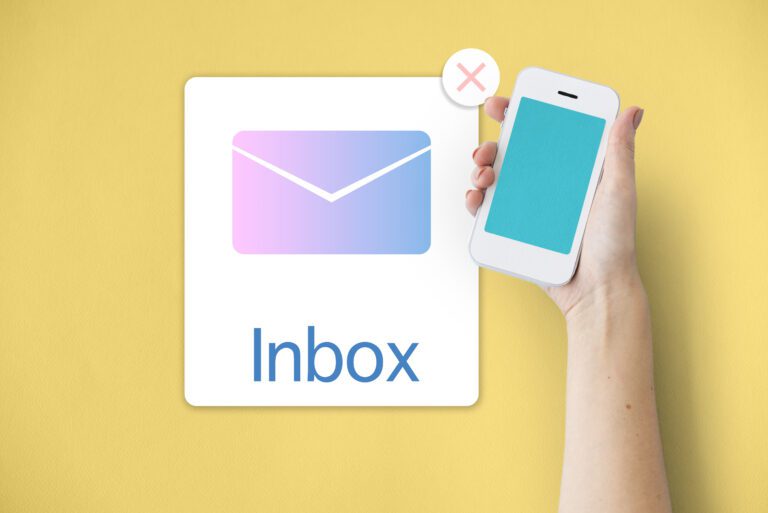What is GDPR Compliance + Checklist Your Company Needs to Follow

I hope you enjoy this blog post. If you want Hello Bar to grow your leads, click here.
Author:
Ryan Bettencourt
Published
August 9, 2024
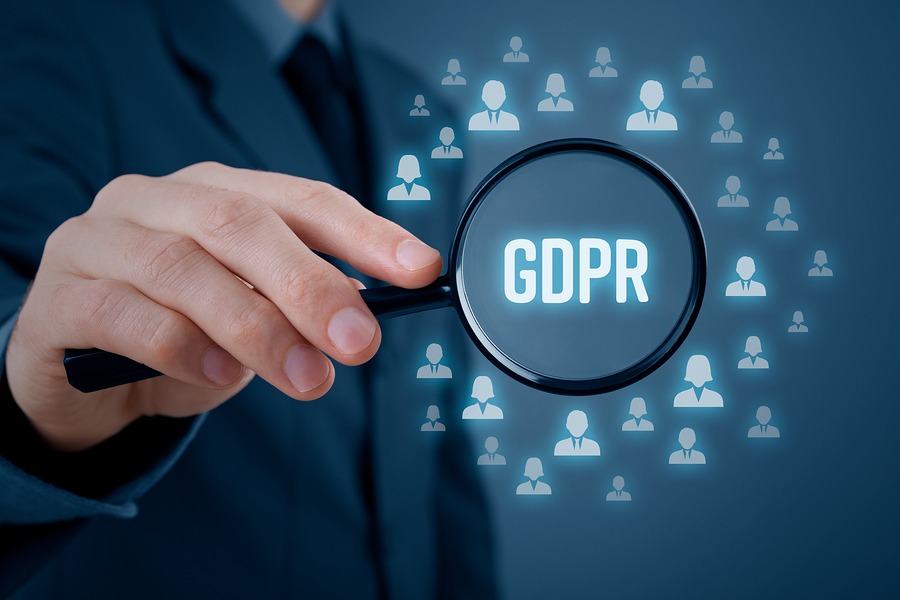
Having a comprehensive GDPR compliance checklist is more important for businesses than ever before. It is the secret to ensuring your company handles user data responsibly and legally.
Still not convinced?
By July 2024, over two thousand fines summing up to over €4.5 billion had been imposed in the EU due to GDPR violations.
Below is a concrete illustration:
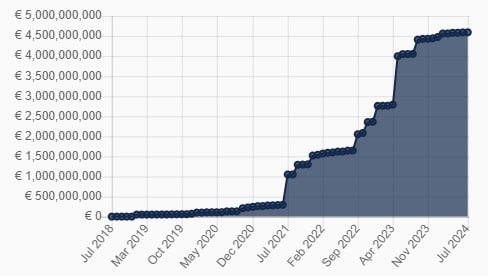
Image via GDPR Enforcement Tracker
Mastering GDPR compliance can help you safeguard your company against these hefty fines and build customers’ trust.
We’ll walk you through the key steps and best practices to ensure your company fully complies with the GDPR.
What Is GDPR And Why Is It Important?

GDPR stands for General Data Protection Regulation. It’s a set of rules enacted by the European Union (EU) in 2018 to protect consumers’ privacy and personal data within the EU.
It gives consumers greater control over how companies collect, store, and use their personal data. It also sets strict rules for organizations that collect and process consumers’ data.
Don’t get scared, though. It’s easy to ensure your business is GDPR compliant (and we’ll help you through the process).
Significance of GDPR for Consumers
In 2023, data breaches exposed over 8 million data records globally as you can see in the image below.
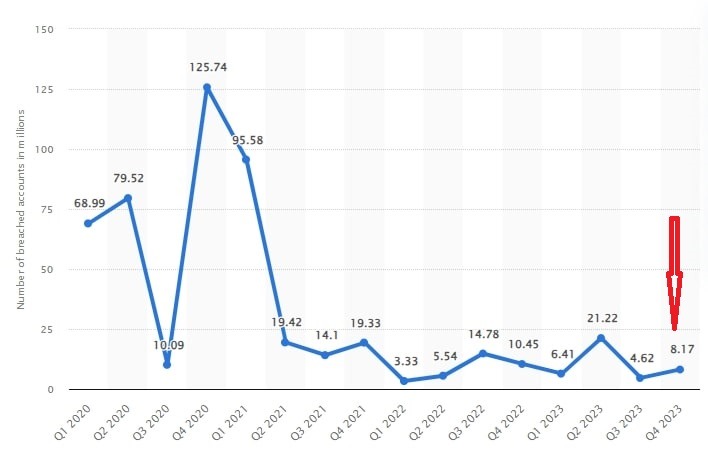
Image via Statista
With the increasing frequency of data breaches, identity theft, and misuse of personal information, consumers are becoming more cautious about sharing sensitive personal information online.
That’s exactly why GDPR mandates organizations to implement robust security measures to protect consumers from data breaches. With the GDPR, consumers gain greater confidence that organizations handle their personal information responsibly and securely.
It also gives consumers the right to know what data organizations are collecting, the purpose of collecting the data, and how they intend to use it. In doing so, GDPR increases transparency and builds trust between consumers and organizations.
What’s more, GDPR empowers consumers to access, correct, delete, transfer, or withdraw consent to their data. It provides them with greater autonomy over their personal information.
You May Also Like:
- Customer Journey Map – A Complete Guide to Help You Create Yours
- 5 Ecommerce Trends to Increase Your Site’s Revenue In 2024
Significance of GDPR for Businesses
If GDPR exists to protect customer data, how is it significant to your organization and why should you comply?
It’s important to note that about 56% of consumers said they were unlikely to trust an organization that wasn’t fully transparent about how it used their personal data. Here’s an elaborate illustration:
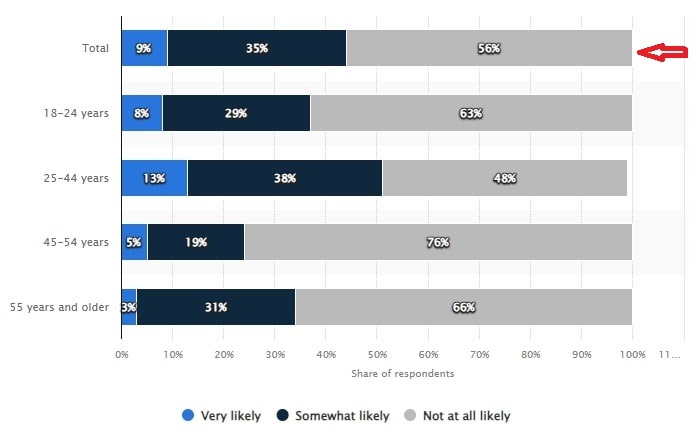
Image via Statista
Once you lose your customers’ trust, they may never work with you again. Here’s how GDPR compliance protects your organization from such situations and more:
- GDPR compliance demonstrates your commitment to data privacy and protection. It helps you build your brand’s reputation and increase customer retention.
- It encourages you to implement better data management practices in your organization, leading to improved data quality, accuracy, and reliability.
- Prioritizing GDPR compliance can differentiate your business from competitors. It helps you attract privacy-conscious consumers and partners.
- GDPR non-compliance can result in severe penalties and fines that can impact your bottom line. Compliance helps you safeguard your organization from losses.
Who Does GDPR Apply To?
GDPR applies to any organization that offers goods or services to consumers in the member states of the European Union (EU) and European Economic Area (EAA) countries.
This applies even to companies that are not located in the EU but offer goods and services to, or process the personal information of residents in that region. If you have an ecommerce store in the US and you sell your products to customers in France, you must comply with GDPR regulations.
GDPR focuses on these categories:
- Data Controllers: Organizations with the authority to decide how personal data is processed.
- Data Processors: Entities that process data on behalf of the data controller.
- Data Subjects: Consumers whose personal data is collected and processed.
The Importance of GDPR Compliance for Businesses Inside and Outside the EU
A GDPR compliance checklist may only be as helpful if you understand why your business should be compliant in the first place.
So, let’s discuss why GDPR compliance is essential for businesses both in and out of the EU:
- Avoiding Fines and Legal Consequences: Complying with data protection regulations helps avoid penalties and lawsuits that can damage your business’s reputation and operations.
- Expanding Market Reach: If you own a business outside the EU, GDPR compliance can help you access the European market and grow your customer base.
- Improving Data Governance: GDPR compliance helps you develop structured data governance frameworks for your business. This will help you better understand and manage your customers’ data.
- Reducing Data Storage Costs: Storing large volumes of personal data can be expensive. However, focusing only on necessary user data can significantly reduce storage costs.
- Building Customer Trust: When you’re transparent about how you use your customers’ data, they are more likely to trust your business. It helps you create stronger customer relationships and encourage brand loyalty.
What is Protected Under the Data Protection Act?
Under the GDPR guidelines, companies must cast a wide net when deciding what to do with personally identifiable information. Data that you might not view as sensitive might still be protected under the GDPR. This is where tools like access control lists come into play, allowing organizations to manage and secure data effectively.
Some of the most common types of data include the following:
- Names
- Addresses
- Social security numbers
- Credit card numbers
- Bank account information
- IP address
- Sexual orientation
- Race or ethnicity
- Political stance
According to the GDPR legislation, companies must take “reasonable” precautions to secure this information from outside intrusion.
You May Also Like:
- 12 Lead Generation Strategies That Will Greatly Increase Conversions
- Best Email Subject Lines: Tips to Create Yours and 25 Great Examples
What Happens If My Company is Not in Compliance With the GDPR?
The EU can level fines against companies that don’t achieve compliance. Since the legislation is quite broad right now, it’s important to be conservative with your use and storage of data.
The most serious infringements can result in extraordinary penalties. In fact, Meta Platforms, Inc. in Ireland received a hefty €1.2 billion fine in 2023 for GDPR non-compliance.
The image below shows several other organizations that also received significant penalties:
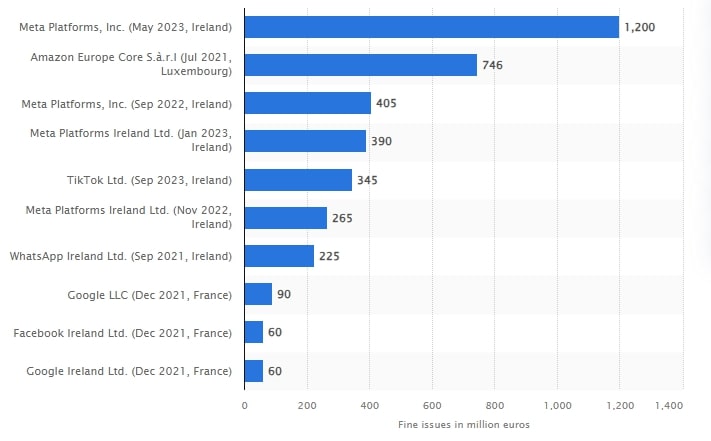
Image via Statista
How Can Hello Bar Make GDPR Compliance Simpler for You?
One of the most important aspects of GDPR compliance relates to how you collect data. If you want to build your email list with lead magnets, for instance, you need to ensure you’re only reaching consumers who really want to hear from you.
We’ve created a helpful tutorial on how to enable GDPR through your Hello Bar account.
Hello Bar allows you to include any necessary information before you collect email addresses, names, and other data. For instance, if you plan to use the information provided for both marketing strategies and data sharing, you need separate opt-ins for each consumer.
You can do this with a Hello Bar. Make it clear, for instance, that you only intend to use the information collected for email marketing purposes and won’t share it with any third party.
It’s as easy as the click of a button. When setting up a Hello Bar, switch the “GDPR Compliant” toggle to “ON.”
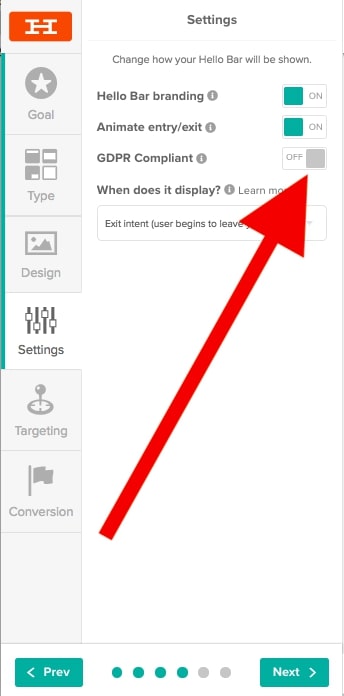
Image via Hello Bar
Hello Bar can also help you incentivize marketing without penalty. For instance, more than consent is required if your lead generation strategy involves collecting email addresses in exchange for an e-book. However, if your email content includes coupons, discount codes, giveaways, and other advantages, you remain compliant.
You May Also Like:
- Hello Bar Inline: A New Tool to Add CTAs to Blog Posts
- How To Create And Maintain Brand Loyalty Like a Pro in 2024
GDPR Compliance Checklist: 11 Steps To Follow

Ensuring the security of customer data is of the utmost importance to avoid negative repercussions, such as customer loss and potential legal issues. The GDPR is extensive and can be overwhelming even for seasoned businesses.
Luckily, the GDPR compliance checklist below can guide you through the complexities and help you avoid costly mistakes.
1. Getting Your Team On Board
Start by having conversations with your employees about GDPR compliance. You might even pass around this article so they can read up on the topic and note any further questions they might have.
This is particularly important in companies where employees operate autonomously. You might know all about GDPR compliance, but if your marketing department doesn’t, they might slip up.
2. Make Sure You’re Using GDPR-Compliant Software
If you’re like most businesses, you use software to maintain and clean your email list. If you’re using a company that isn’t GDPR-compliant, you might want to consider switching.
Hello Bar, for instance, has already put in place helpful tools so you don’t have to put so much effort into compliance. In fact, you can show that you’re compliant on your Hello Bars.
Just access your Hello Bar account, click on the Settings tab, and click on Privacy.
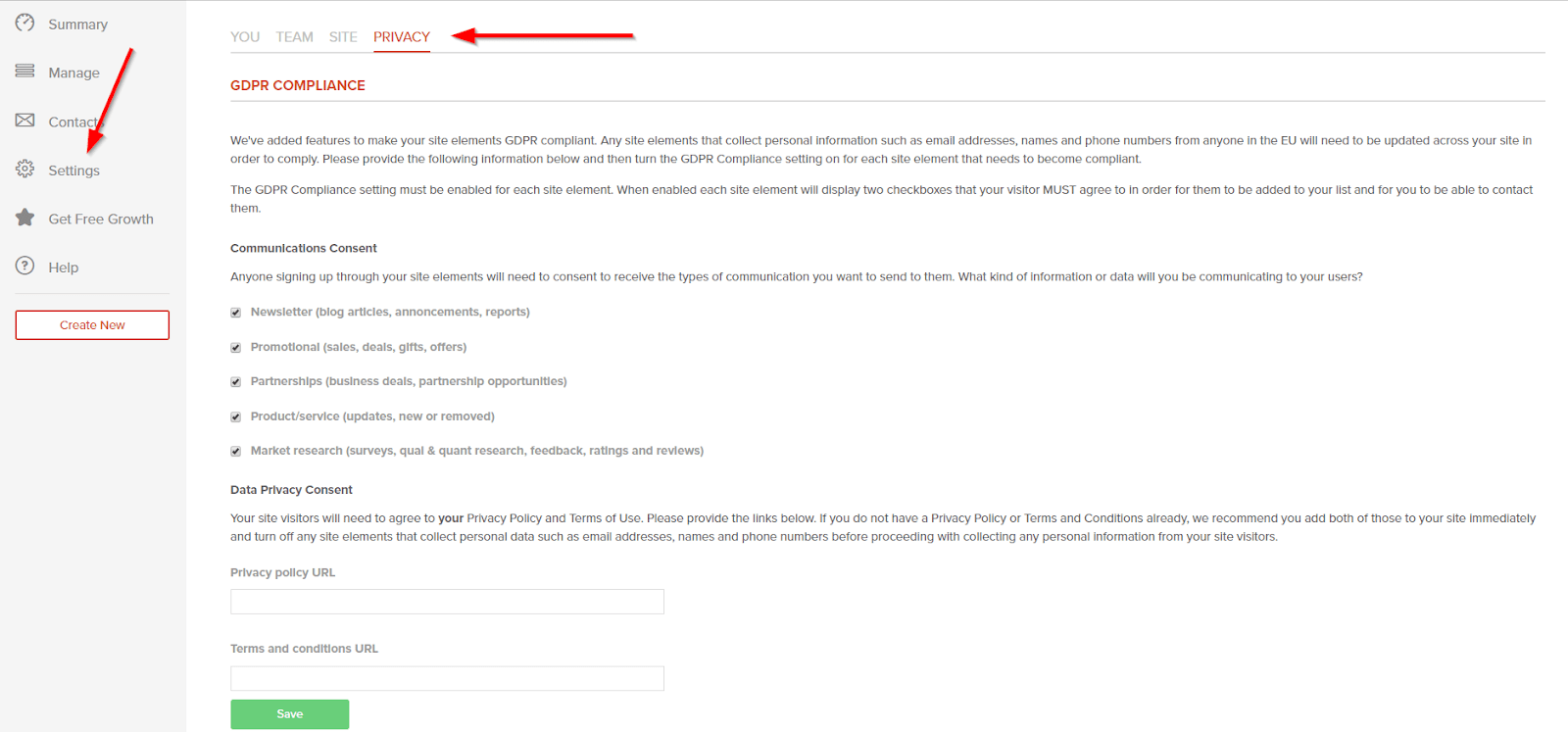
Then, just add the URLs to your terms and conditions and privacy policy pages.
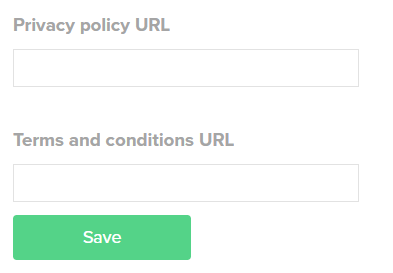
That way, when prospects fill out your forms, they’ll see the request for GDPR consent.
3. Evaluate Your Opt-Ins
Opt-in lead capture forms are at the heart of the GDPR. The EU wants consumers to give explicit consent before they receive communications, such as emails or SMSs, from companies.
Hello Bar makes it easy. As mentioned above, you can enable GDPR compliance right from your account. Since you can’t have consumers opt-in for two things (such as a lead magnet and your newsletter) at the same time, you can use the Hello Bar thank-you page to allow prospects to sign up for your newsletter.
This is a great time to audit all your landing and opt-in pages. Make sure you’re using the ideal wording and images to attract new prospects and stay within the GDPR.
4. Clarify Your Terms and Conditions
We’ve all run across terms and conditions that seem to be written in a foreign language. If your customers can’t understand your policies, they can’t consent to give you their data.
If you’re using Hello Bar, you must upload your own terms and conditions and privacy policy to demonstrate compliance. Now’s a great time to review those documents and make sure they’re ready for the May 25 GDPR launch.
Make sure your terms and conditions are written in plain, straightforward language. You might have some legalese in there, but use parenthetical asides to further explain those phrases or terms.
5. Get In Touch With Your List

You probably already have a well-built email list. Now’s the time to get in touch with everyone who currently subscribes. Ask them to click a link and opt-in again if they want to continue receiving messages.
You don’t want to delete email addresses or contact subscribers after May 25. At that point, the GDPR is already in effect.
Don’t look at this as a bad thing. Now’s a great time to clean up your list and make sure all your subscribers still want to hear from you.
You May Also Like:
- Email Collection: 17 Best Practices to Exponentially Grow Your Email List
- 35 Best Abandoned Cart Email Examples: Increase Sales Today
6. Audit Your Business For Compliance
The GDPR provides specific rights for consumers in three main categories:
- Right to Access: Consumers have the right to access the information you have collected on them in a readable format.
- Right to Be Forgotten: They can also request their information be removed from your system at any time. The right to be forgotten requires you to comply with that request.
- Right of Data Portability: Additionally, consumers have the right to obtain the information you’ve collected, then transport it to a third party of their choosing.
Ensure your company has created policies and protocols for addressing these rights when they become an issue.
7. Create a Complete Process to Report Data Breaches
Reporting data breaches might be uncomfortable, but it’s essential. As soon as you learn of a data breach, you must immediately report it to the EU. Having a system in place, like unified endpoint management, for reporting everything you know about the breach, including the people impacted and other information.
8. Will Your Company Need to Hire or Appoint a Data Protection Officer (DPO) to be GDPR compliant?
Larger companies will have a bigger need for DPOs than their smaller counterparts. However, only you can decide whether you need to create such a position for your business.
Many experts recommend hiring a dedicated DPO. This person is responsible for protecting the data your company collects, ensuring that you remain GDPR compliant, and reporting any vulnerabilities to senior staff.
9. Up The Ante
If you have a ho-hum offer, now’s the time to sweeten the pot. Consumers will have to take more opt-in for your email newsletters, webinars, and other purposes, so you need a slam-dunk incentive.
Plus, you need your headlines and CTAs to communicate effectively with your audience. Speak in their language and make sure they understand the benefits of what you’re offering.
10. Segment Your List
Ideally, you’ll want to segment your email list into two categories:
- People from the EU or whose origins are unknown
- People outside the EU
Those in the first category need to hear from you soon. Give them the opportunity to re-opt-in.
Hello Bar makes this process easy. You can import your email list from a CSV file or from other email services, then segment them based on the data you know.
11. Assess Third-Party Processors for Risks
Sometimes, data security risks may arise from third-party sources.
Identify third-party services that process consumers’ data on your behalf. This includes cloud service providers, payment processors, content promotion agencies, and IT support services.
Review their terms of service, privacy and data protection policies to understand their compliance practices. Ideally, their policies should align with yours to ensure compliance.
How Do You Get GDPR Certified?
A GDPR certification is a formal recognition that your organization adheres to the General Data Protection Regulation principles. However, there isn’t a single official and universally-recognized GDPR certification issued by the European Union.
Instead, you can seek certification from accredited bodies like the BSI Group (British Standards Institution), EuroPriSe (European Privacy Seal), or DNV GL.
To get certified, you must follow every step in this GDPR compliance checklist and implement the required measures. You should then audit your data privacy practices against GDPR requirements.
If the audit is successful, your chosen certification body will issue a certification demonstrating GDPR compliance.
You May Also Like:
- How to Use Online Courses for Amazing B2B Lead Generation Results
- 13 Content Promotion Proven Formulas to Greatly Increase Web Traffic
Extra Points to be Aware About GDPR Compliance

In addition to the above GDPR compliance checklist, consider these best practices when executing your data protection plan.
- Involve All Stakeholders: Everyone needs to be on the same page moving forward to avoid any glitches in the process.
- Consider Mobile Technology and Access: Do you have a mobile app? If so, does it ask for unnecessary access to data? If so, you might need to change it.
- Review Outsourcing Options: Small companies might not need to hire dedicated data protection officers. Consider hiring a consultancy instead. Outsourcing specialized help can ensure you don’t miss an important aspect of data security.
GDPR Updates for 2024
The EU Council passed the EU AI Act in May. The aim of this new Act is to ensure that AI systems are developed and used in a way that respects people’s rights and safety. It categorizes AI systems based on their risk level and imposes different requirements accordingly.
The European Commission also proposed a new regulation to enhance cooperation between data protection authorities (DPAs) when enforcing GDPR compliance outside the EU. This enhanced cooperation will lead to faster and more effective enforcement of the GDPR, ensuring stronger data protection and dispute resolution for EU citizens.
FAQs
Q1. What is a GDPR compliance checklist?
A GDPR Compliance checklist is a comprehensive list of guidelines and instructions organizations use to ensure they adhere to personal data protection regulations. The different steps of GDPR compliance checklist are there to help organizations manage and protect personal data in compliance with GDPR requirements.
Q2. How do I make my company GDPR compliant?
Here are key steps to help you achieve GDPR compliance
- Train your team
- Leverage GDPR-compliant platforms
- Audit your opt-in forms
- Simplify your terms and conditions
- Clean your email list
- Update your privacy policy
- Outsource data protection specialists
- Segment your list
Q3. What are the 4 key components of GDPR?
The four key components of GDPR are:
- Accuracy: Businesses must keep user data accurate and updated.
- Lawfulness, Fairness, and Transparency: User data must be processed lawfully, fairly, and transparently.
- Data Minimization: Organizations should only collect necessary personal data.
- Storage Limitation: Entities can only store personal data for as long as necessary.
Q4. How can a user check if a company is GDPR compliant?
Here’s how to check GDPR compliance:
- The company has a clear privacy policy
- The organization clearly outlines how to exercise data subject rights
- The company has appropriate data privacy security measures
- The entity is transparent about its data processing activities
Q5. Who checks GDPR compliance?
Data Protection Authorities (DPAs) are government bodies responsible for enforcing GDPR. They maintain the integrity and effectiveness of GDPR, protect individuals’ personal data, and hold organizations accountable for their data protection practices.
They have the authority to conduct investigations, issue warnings, and impose fines against non-compliant organizations.
Conclusion
Utilizing our GDPR compliance checklist can help you confidently master complex data protection regulations and avoid pitfalls.
You have nothing to worry about as long as you’re acting in your customers’ best interests and legally collecting data.
However, the journey to compliance doesn’t end here. The emergence of new regulations and the persistent threat of data breaches necessitate ongoing vigilance and adaptation. You must continuously monitor and update your policies to adapt to the evolving data protection and security landscape.
Hello Bar can help you monitor and collect consumer information lawfully.
Has your business begun preparing for GDPR?




